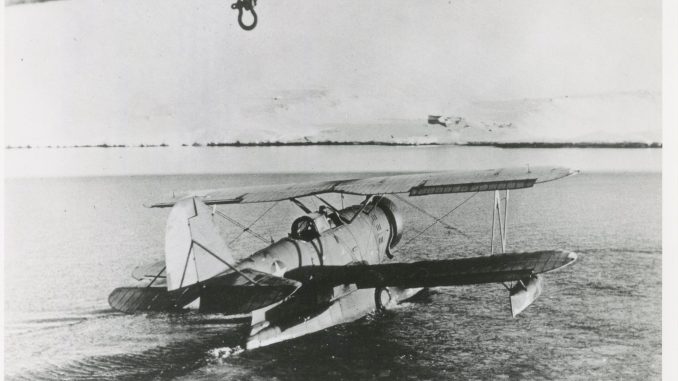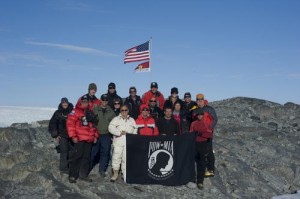
![Original caption: "THE TAKE OFF: The Coast Guard amphibian plane (J2F) has been put over the side, and Lieutenant John A. Pritchard, Jr. and Radioman Benjamin A. Bottoms, ready for the take-off, scan the Greenland icebergs over which they have spent so many hours of hazardous flying in their single-engine plane. They successfully rescued two of the U.S. Army fliers and met their death in an attempt to rescue the [sic] third flier." (photo credit: USCG Archives)](https://vintageaviationnews.com/wp-content/uploads/2013/04/GrummanJF21942Northland002.jpg)
(photo credit: USCG Archives)
The Defense Department’s Joint POW/MIA Personnel Accounting Command has announced that another World War II aircraft, a Grumman J2F-4 Duck, has been found beneath the ice of Greenland. This particular airplane and its three crewmen met their end during a daring rescue mission in November 1942. In a single-engine Grumman Duck aircraft, Lieutenant John Pritchard Jr. and Radioman Benjamin Bottoms made an unprecedented landing on the Greenland ice cap to rescue two members of a crashed B-17’s crew. But the next day, after rescuing a third crew member, the Duck encountered whiteout conditions and crashed, leaving no survivors.
By using historical information, ground penetrating radar, a magnetometer and metal detection equipment, the expedition team consisting of U.S. Coast Guard service members and scientists and explorers from North South Polar, Inc. (NSP) have isolated the location where the aircrew crashed on Nov. 29, 1942. The team then melted five six-inch-wide holes deep into the ice and lowered a specially designed camera scope. At approximately 38 feet below the ice surface in the second hole, the team observed black cables consistent with wiring used in WWII-era J2F-4 amphibious Grumman aircraft. Further analysis of video from the camera scope and photographs captured by a member of the expedition team revealed additional aircraft components similar to those found in the engine area of the J2F-4 Grumman Duck.

(Photo credit: USCG)
“Locating the J2F-4 Grumman Duck was a monumental success,” said Commander Jim Blow, from the U.S. Coast Guard Office of Aviation Forces. “Collectively, the Coast Guard and NSP accomplished what the Coast Guard set out to achieve in 2008 when efforts began to locate the Duck.”
“The three men aboard this aircraft were heroes who made the ultimate sacrifice for their country,” Blow added. “The story of the Grumman Duck reflects the history and the mission of the Coast Guard, and by finding the aircraft we have begun to repay our country’s debt to them.”

Be the first to comment
Graphic Design, Branding and Aviation Art